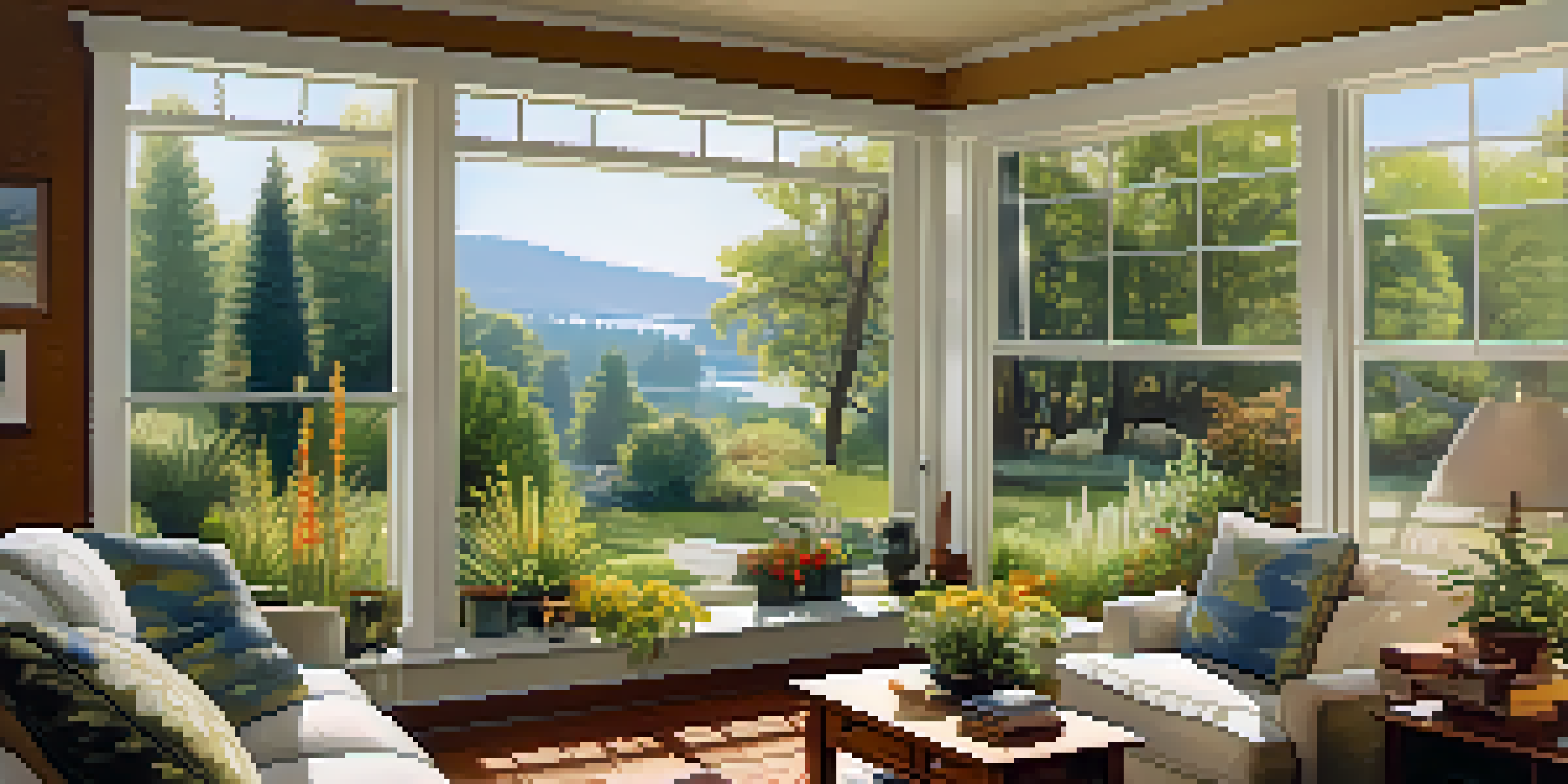How to Build a Home That Is Energy-Efficient and Resilient

Understanding Energy Efficiency and Resilience
Energy efficiency means using less energy to provide the same service, while resilience is about a home's ability to withstand and recover from challenges like extreme weather. Think of it this way: an energy-efficient home is like a well-tuned engine, running smoothly without wasting fuel. Resilience, on the other hand, is like a sturdy tree that bends but doesn't break in a storm. Together, these concepts create a home that’s not just cost-effective to run, but also prepared for whatever nature throws at it.
Choosing the Right Location for Your Home
The first step in building an energy-efficient and resilient home is choosing the right location. Look for areas that are less prone to flooding, wildfires, or extreme weather events. Additionally, consider the orientation of your home on the lot; positioning it to maximize natural sunlight can significantly reduce heating costs in winter. By selecting a strategic location, you lay the groundwork for a home that thrives in its environment rather than just survives.
Energy Efficiency vs. Resilience
Energy efficiency reduces energy use while resilience ensures your home withstands extreme weather challenges.
Incorporating Sustainable Building Materials
Using sustainable building materials is crucial for both energy efficiency and resilience. Materials like bamboo, reclaimed wood, and recycled steel not only reduce your carbon footprint but often offer superior durability. Imagine using a material that not only looks great but also stands the test of time and helps the planet. By choosing wisely, you contribute to a healthier environment while creating a robust structure that will last for generations.
Designing for Natural Light and Ventilation
Maximizing natural light and ventilation is key to creating an energy-efficient home. Large windows, skylights, and open floor plans can help reduce reliance on artificial lighting and cooling systems. Picture walking into a bright, airy room that feels warm in winter and cool in summer—all thanks to smart design choices. This approach not only saves energy but enhances your overall living experience, making your home more inviting and comfortable.
Strategic Location Matters
Choosing a location less prone to natural disasters and orienting your home for sunlight lays the foundation for energy-efficient living.
Investing in High-Quality Insulation
Insulation is your home’s first line of defense against temperature fluctuations, making it a vital component of energy efficiency. High-quality insulation keeps your home warm in winter and cool in summer, reducing the need for heating and cooling systems. Think of insulation as a cozy blanket that keeps your home comfortable year-round. Investing in good insulation not only saves energy but also adds to the durability of your home by preventing moisture build-up and related problems.
Installing Energy-Efficient Windows and Doors
Energy-efficient windows and doors are essential for preventing heat loss and gain. Look for double or triple-glazed windows with low-E coatings to improve insulation. Imagine a well-sealed window that keeps the cold out during winter while letting in natural light; it’s like having your cake and eating it too! By upgrading your windows and doors, you enhance your home's energy efficiency and overall comfort while also increasing its value.
Sustainable Materials Enhance Durability
Incorporating sustainable building materials not only lowers your carbon footprint but also increases the longevity of your home.
Incorporating Renewable Energy Sources
Renewable energy sources, such as solar panels or wind turbines, can significantly enhance your home's energy efficiency. By generating your own electricity, you reduce your dependence on fossil fuels and lower your energy bills. Picture your home as a mini power plant, harnessing the sun’s energy to power your daily activities. This not only benefits your wallet but also contributes to a cleaner planet, making it a win-win situation.
Creating a Resilient Landscape
A resilient landscape can help protect your home from extreme weather and promote biodiversity. Consider using native plants that require less water and are adapted to your local climate. Think of your garden as a protective buffer, absorbing excess rainwater and providing habitat for local wildlife. By designing a landscape that works harmoniously with nature, you create an additional layer of resilience around your home, ensuring that it remains a safe haven.